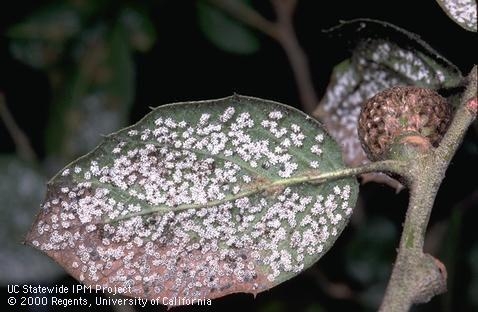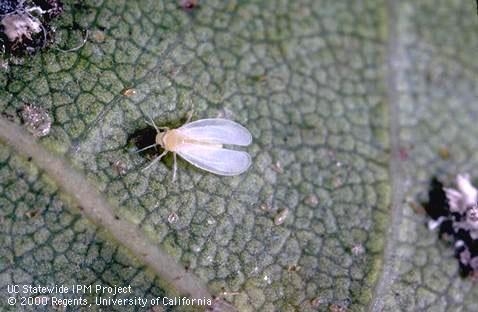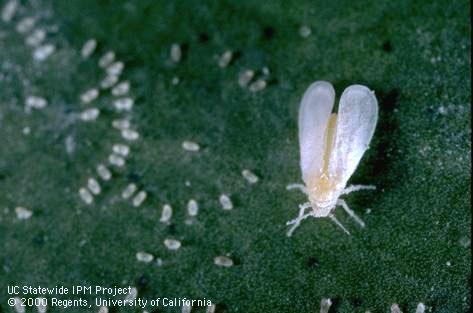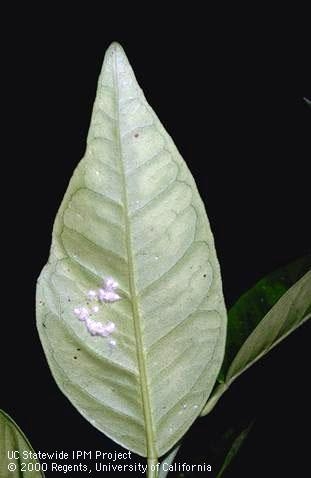Whiteflies are small, white-winged, low flying insects that flit erratically when disturbed. Ten species are common in California. Whiteflies feed on many crops, weeds, ornamentals, shrubs and trees, including citrus. As one host plant dries up or is harvested, they move on to another host. Eggs, laid on the underside of leaves, hatch and the young whiteflies gradually increase in size through four nymphal stages until the winged adult emerges. All stages of whiteflies, from the barely visible crawler to the winged adult, suck juices from leaves. A few whiteflies will not significantly damage plants, but large populations of the immature whiteflies can cause plant distortion, discoloration, or silvering of leaves. Like aphids, whiteflies excrete honeydew, so leaves may become sticky or covered with black sooty mold. Ants, drawn by the honeydew, fend off bugs that feed on whitefly larvae so controlling ants will aid in minimizing whitefly damage.
Crown whitefly colony on oak leaf. Jack Kelly Clark, UC IPM
Crown whitefly adult on leaf. Jack Kelly Clark, UC IPM
Adult woolly whitefly. Jack Kelly Clark, UC IPM



